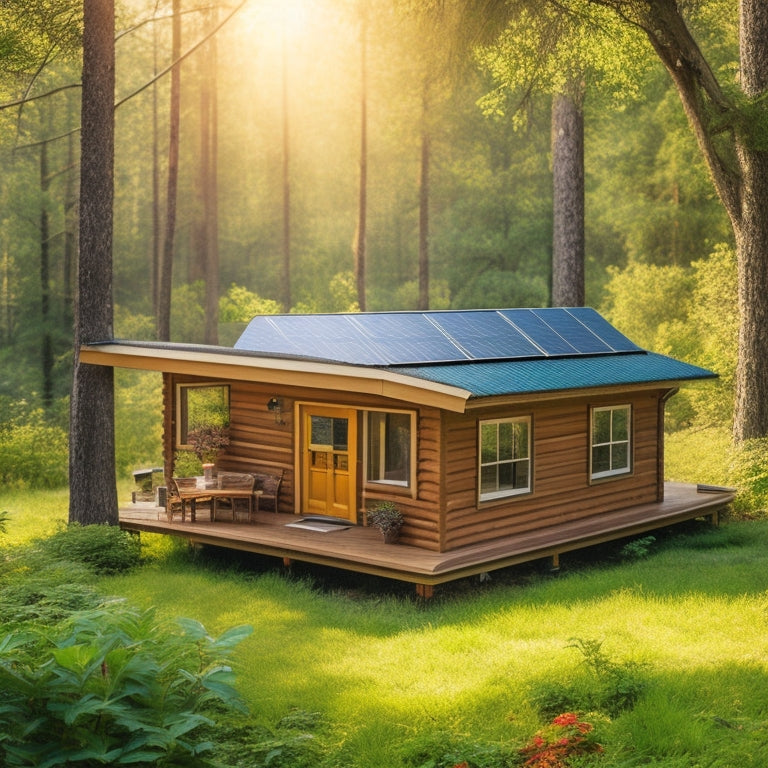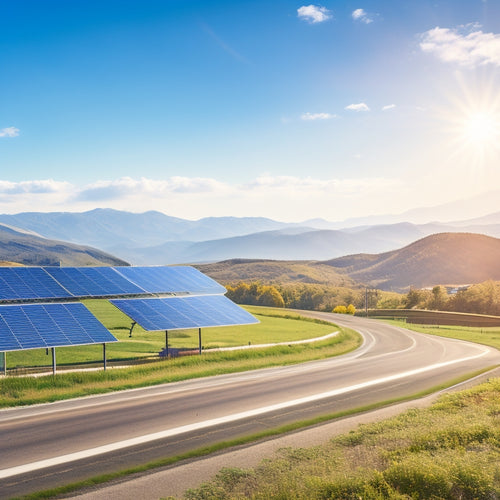
Choosing the Right Power Inverter for Energy Independence
Share
When choosing a power inverter for energy independence, you'll want to assess your power needs by identifying devices and their individual power requirements, calculating total wattage and ampere-hours, and evaluating peak power surge requirements. You'll also need to decide between pure sine wave and modified sine wave inverters, evaluate compatibility with battery chemistry and voltage, and choose a configuration that suits your system. Additionally, look for inverters with high efficiency ratings, advanced monitoring systems, and built-in safety features. By understanding your power needs and reflecting on these key factors, you'll be well on your way to selecting the right inverter for a reliable and efficient energy-independent system - and there's more to contemplate in your path to energy independence.
Overview
- Match inverter wattage with solar panel array's maximum power output to ensure optimal performance and prevent system failure.
- Choose an inverter with a high efficiency rating (above 90%) to minimize energy losses and maximize energy harvesting.
- Consider inverter compatibility with battery chemistry and voltage to prevent reduced efficiency or battery damage.
- Select an inverter with advanced monitoring capabilities to gain insights into energy production and optimize system performance.
- Ensure inverter surge capacity meets maximum power requirements of appliances to handle unexpected energy spikes.
Understanding Your Power Needs
Since you're considering purchasing a power inverter, it's vital to determine your power needs first. Calculating your energy consumption is fundamental to guarantee you get the right inverter for your system.
Start by identifying the devices you want to power and their individual power requirements. Make a list of the devices, their wattage, and the number of hours you'll use them daily. Add up the total wattage and calculate the total ampere-hours (Ah) required.
Consider the peak power surge requirements as well. When evaluating your energy needs, don't forget to assess roof orientation and its impact on energy output, as a south-facing roof can greatly improve energy production.
It's also important to multiply your total consumption by 1.5 to account for unexpected energy spikes. This information will help you choose an inverter that can handle your energy consumption, providing you with the freedom to power your devices reliably and efficiently.
Inverter Types and Configurations
Now that you've determined your power needs, you're ready to investigate the various inverter types and configurations available to meet those needs.
There are two primary inverter types: pure sine wave and modified sine wave. Pure sine wave inverters produce a smooth, continuous output identical to grid power, making them suitable for sensitive electronics and motors. Modified sine wave inverters, on the other hand, generate a stepped waveform that's less expensive to produce but may not be compatible with certain appliances.
When selecting an inverter, it's essential to evaluate inverter compatibility with your battery chemistry, voltage, and charging requirements to prevent damage and system failure. Additionally, ensuring the inverter's technical specifications match your battery bank requirements is critical for peak performance and safety.
Configurations include standalone inverters, inverter/chargers, and grid-tie inverters. You may also take into account a 12V, 24V, or 48V inverter, depending on your system's voltage requirements.
Key Features to Consider
As you investigate deeper into selecting the right power inverter, it's vital to assess the key features that will guarantee your system operates efficiently and safely.
Efficiency ratings are significant, as they directly impact your energy independence. Look for inverters with high efficiency ratings, typically above 90%, to minimize energy losses. Inverters with high power conversion efficiency maximizes energy harvesting during peak sunlight hours, guaranteeing you get the most out of your solar panels.
Furthermore, inverters with advanced monitoring systems provide detailed observations into energy production and consumption, allowing you to optimize your energy usage.
Safety features are equally important, so verify the inverter you choose has built-in protections such as overcurrent, overvoltage, and short-circuit protection. Additionally, consider the inverter's surge capacity, which should be sufficient to handle the maximum power requirements of your appliances.
Sizing and Compatibility Matters
The solar panel array you've carefully selected is only half the battle - the power inverter you choose must be properly sized to handle the array's maximum power output.
You'll need to guarantee the inverter wattage matches your array's capacity to avoid overheating or underperformance. Oversizing the inverter can lead to wasted energy, while undersizing can cause system failure.
In addition, you must verify battery compatibility with your inverter. Different battery types and chemistries have unique charging requirements, so it's vital to select an inverter that's compatible with your battery bank.
A mismatch can result in reduced system efficiency or even damage to your batteries.
Top Brands and Product Reviews
With your solar panel array and power inverter properly sized and compatible, you're ready to investigate the top brands and products that can help you get the most out of your system.
When it comes to brand comparisons, you'll want to focus on product reliability, efficiency, and durability. Look for brands like Magnum Energy, OutBack Power, and Schneider Electric, which offer high-quality inverters with impressive warranties.
Research each product's features, such as surge capacity, voltage regulation, and monitoring capabilities. Read reviews from other customers who've installed these systems to get a sense of real-world performance.
Frequently Asked Questions
Can I Use a Power Inverter With a Generator or Only Solar Panels?
You can use a power inverter with a generator, but guarantee generator compatibility to avoid frequency fluctuations. Opt for an inverter with high inverter efficiency to minimize energy losses, and enjoy reliable off-grid power.
How Do I Ensure My Inverter Is Protected From Power Surges?
You guarantee your inverter's safety by installing a surge protector, which absorbs or redirects voltage spikes, and opting for an inverter with built-in surge protection, thereby safeguarding your investment and securing inverter safety from power surges.
Are Power Inverters Suitable for Use in Humid or Salty Environments?
When operating in humid or salty environments, you'll need an inverter with humidity resistance and corrosion protection to guarantee reliability; look for models with sealed or coated components, and consider adding a protective enclosure to safeguard your investment.
Can I Install a Power Inverter Myself or Do I Need a Professional?
As you ponder tackling the installation yourself, coincidentally, safety concerns arise. While it's possible to DIY, prioritizing installation safety is essential; take the time to research DIY tips and weigh the risks before deciding to go solo or hire a pro.
Are There Any Certifications or Compliances I Should Look for in an Inverter?
When selecting an inverter, you'll want to look for certifications like UL, ETL, or CE, guaranteeing compliance with safety standards; also, check efficiency ratings, and consider inverter types, such as modified sine or pure sine wave, to verify reliable energy conversion.
Ready to Buy
As you steer the expedition to energy independence, remember that a power inverter is the linchpin that holds it all together. Don't be caught in the dark - choose wisely, and your off-grid dreams will shine brighter than a guiding light in the night. After all, an ounce of prevention is worth a pound of cure. By considering your power needs, inverter types, key features, and sizing, you'll be well on your way to utilizing the power of independence.
Related Posts
-

Is Switching to Green Energy Solutions Easy
Switching to green energy solutions isn't just easy; it's also beneficial. You can greatly cut utility costs and enjo...
-

Essential Hiking Lights for Safety and Fun
When you're hitting the trails, essential hiking lights are vital for safety and fun. A lightweight headlamp offers h...
-

Designing a Green Roof for Maximum Energy Efficiency
Designing a green roof for maximum energy efficiency involves several key strategies. Start by selecting native, drou...


